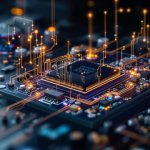
In this series, we’ll dive into insights from the soon-to-be-released updated book on hardware product realization by unpacking the strategies, pitfalls, and opportunities that will define the future of building hardware in an AI-driven world.
The goal of this blog series and the book is to demystify the process of bringing hardware products to market in a more agile way, while helping businesses avoid common and costly mistakes that set back so many development efforts. Taking a holistic view of the entire product realization process allows an understanding of the interconnected nature of all the activities undertaken as part of this and these are described as 10 best practices.
These 10 best practices will be familiar to those directly involved in the new product introduction process of hardware-based (or system-based) high-tech products. If implemented together effectively, they can reduce product risk, improve chances of market success, and create scalable processes. In this series we will look at each of these at a high-level to introduce each of the concepts and show how they connect to create viable products that can remain in the market beyond initial designed profitability.
AI has rapidly emerged as an important tool in the product realization process. From creating documentation and generating code to supporting analytics and marketing, AI can help streamline many aspects of the hardware NPDI process. In future episodes of this blog, it will be highlighted where AI can provide real value today and where it still has limitations, particularly in the hardware design ecosystem. These insights are intended to give you a balanced perspective on how AI currently fits into the agile hardware product realization framework.
As you explore this series of articles, an important consideration will be the type of product that you are bringing from concept to production. Less complex high-volume products involve very different development and operational strategies than more complex lower-volume products. Understanding these differences early will help you select the right approach for your business.
For companies launching their first product, there is a unique opportunity to implement best practices from the start and to “get it right the first time.” For companies with established processes and systems, the series offers an opportunity to revisit, refine, and optimize your existing process, especially as new AI tools emerge that can augment and strengthen existing practices when applied strategically. Successfully implementing change, however, requires strong management support, cultural alignment, and companywide commitment to achieve sustainable results.
It is recommended to complete reading this series in its entirety to demystify the process and gain the full benefits of the practices described. Doing so will help you learn about areas you may not typically become involved with and understand the importance of how these practices reinforce each other to help you get better products to market faster with less risk.
If you are involved in the process or simply curious about how it works, then this blog series and its accompanying book are for you.
Join us next time for an overview of Product Realization and a look at New Product Introduction.
Sources: Extracts from the completely revised book Agile Hardware Product Realization (version 4.0) by Michael Keer and David Eden, available from November 2025.
 Ask a question or send along a comment.
Please login to view and use the contact form.
Ask a question or send along a comment.
Please login to view and use the contact form.
Leave a Reply